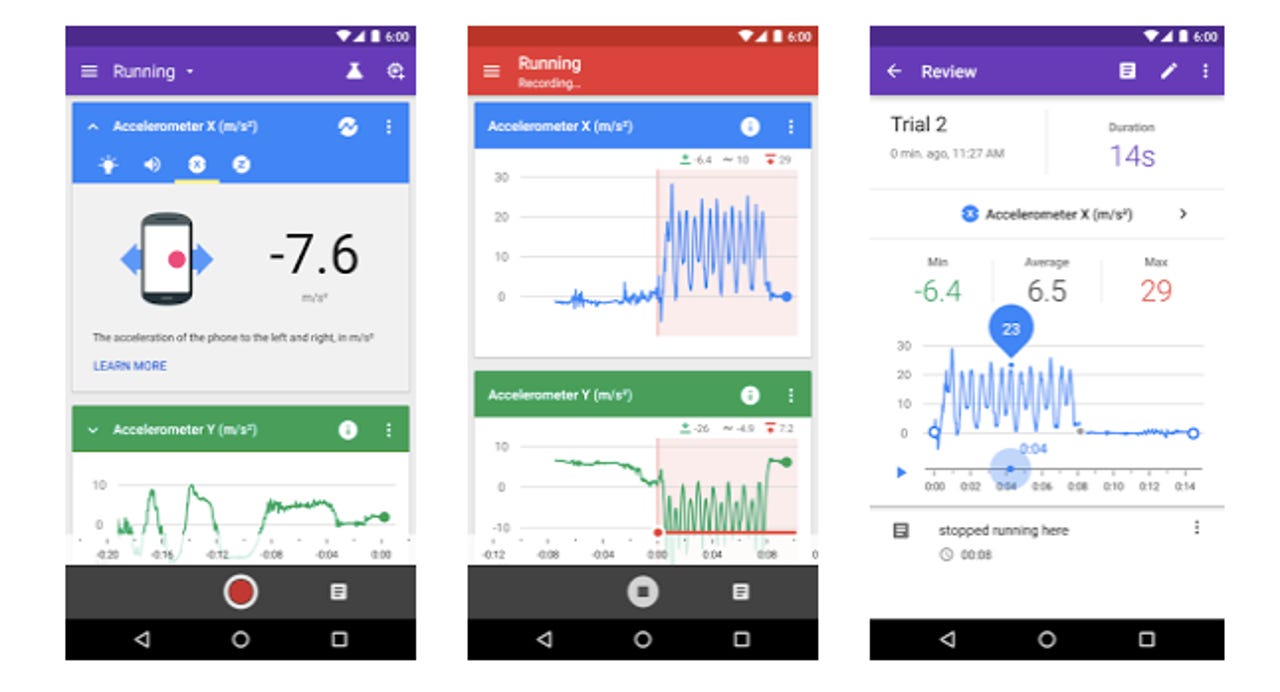Android tricorder? Google's new app uses your smartphone's sensors to collect, chart science data


Measure your surroundings with Google's new Science Journal app.
Google's new Android app can record and measure your environment and then helps you turn data into graphs.
The app, called Science Journal, is meant to "bring out the inner scientist in all of us" and encourage people, young and old, to think like scientists, according to Chris DiBona, Google's director of making and science, and open source.
The app lets users build science projects using data collected from a smartphone's sensors, such as the accelerometer, light sensors, and microphone, or by using sensors from other devices connected via Bluetooth to the smartphone.
Just using the smartphone's sensors, it offers a number of ways to measure acceleration, ambient light, and sound intensity.
Users can record projects with the app, take notes, and add images to them to give extra context to observations.
An example of a question Google suggests could be answered using the light sensor is how to determine the best angle for a solar panel for optimal illumination.
The Android app is part of Google's Making & Science Initiative, which aims to encourage more people to explore science.
Google is also working with San Francisco's Exploratorium to promote a number of third-party made activities and kits that can be used with the Science Journal app.
Exploratorium notes in a blogpost that while it wants people to visit its museum and explore science there, it is competing for attention with smartphones. Its answer has been to work with Google to make the smartphone part of that experience.
The kits include sensors, microcontrollers, and craft supplies. To support these items, Google has also released microcontroller firmware, so that data from an Arduino device's pins can be sent to Science Journal.
Activities include a number of suggested experiments using the phone's sensors, as well as projects and instructions for how to go about building them.